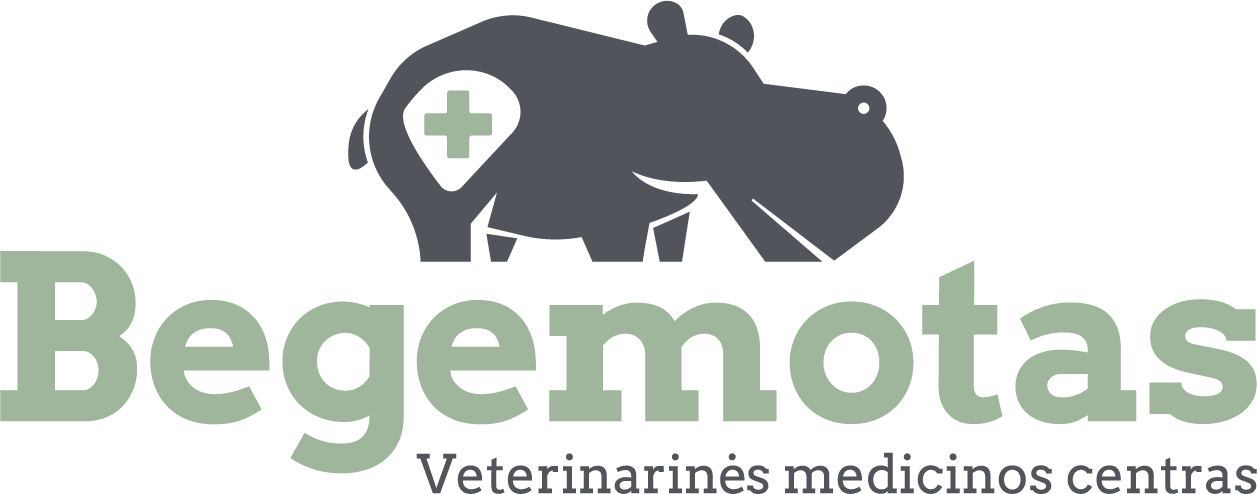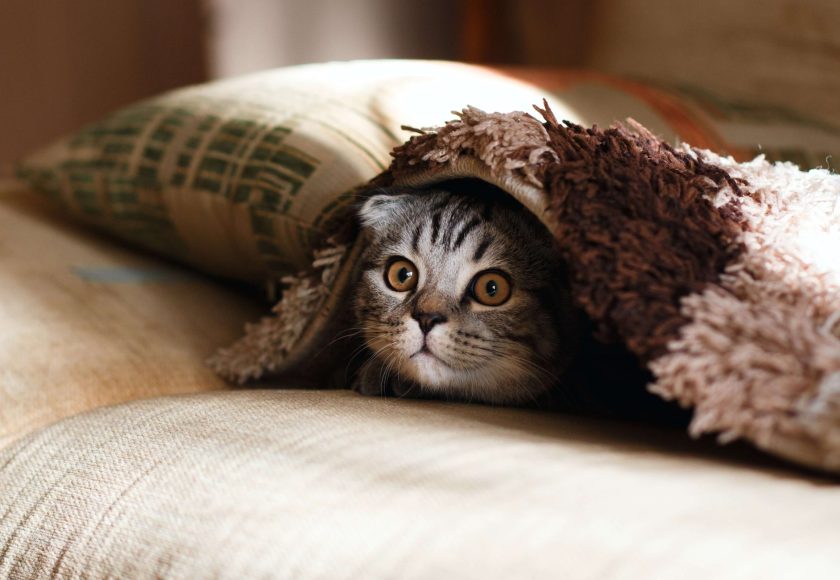The health of cats’ eyes is extremely important not only for their vision, but also for their overall well-being. As with other animals, the eyes are a sensitive and easily damaged part of the body, and various eye diseases in cats can cause discomfort, pain, or even more serious health problems.
Cats are prone to various eye diseases, which, if left untreated, can worsen and even lead to more serious complications, including blindness. In this article, we will discuss the most common cat eye diseases, cat eye inflammation, treatment methods, and the use of eye drops.
Table of contents
The most common eye diseases in cats
Cat eye diseases can vary and include both infectious and genetic problems. Here are some of the most common cat eye diseases:
- Conjunctivitis is an inflammation of the mucous membrane (conjunctiva) of the eye. Symptoms may include redness, swelling, excessive tearing, and pus. This disease is most often caused by bacterial or viral infections, but sometimes conjunctivitis can also be allergic in origin. If left untreated, the inflammation can become chronic and cause more serious damage to the eye tissues.
- A corneal ulcer is a lesion on the cornea that can be caused by trauma, infection, or dry eyes in cats. A corneal ulcer causes severe pain, the eyes may become sensitive to light, and vision may deteriorate. Without treatment, the ulcer can deepen and cause more serious complications, so prompt veterinary care is essential.
- Cataracts are a common eye disease in cats, involving clouding of the lens of the eye. This disease most often occurs in older cats, but it can also be hereditary. Cataracts prevent light from entering the eye, causing the animal to see poorly or lose its vision completely. Surgical treatment can help remove cataracts and restore vision.
- Glaucoma is a disease in which pressure builds up in the eye, which can damage the optic nerve and cause irreversible vision loss. Cats with glaucoma may experience eye pain, redness, and even enlargement of the eyeball. Glaucoma requires immediate veterinary intervention, as the disease can progress rapidly.
- Corneal inflammation (keratitis) is an inflammation of the cornea that can be caused by trauma, infection, or autoimmune diseases. This eye disease in cats often causes cloudy eyes and reduced vision. When treating this condition, it is important to determine the cause of the inflammation and begin appropriate therapy.
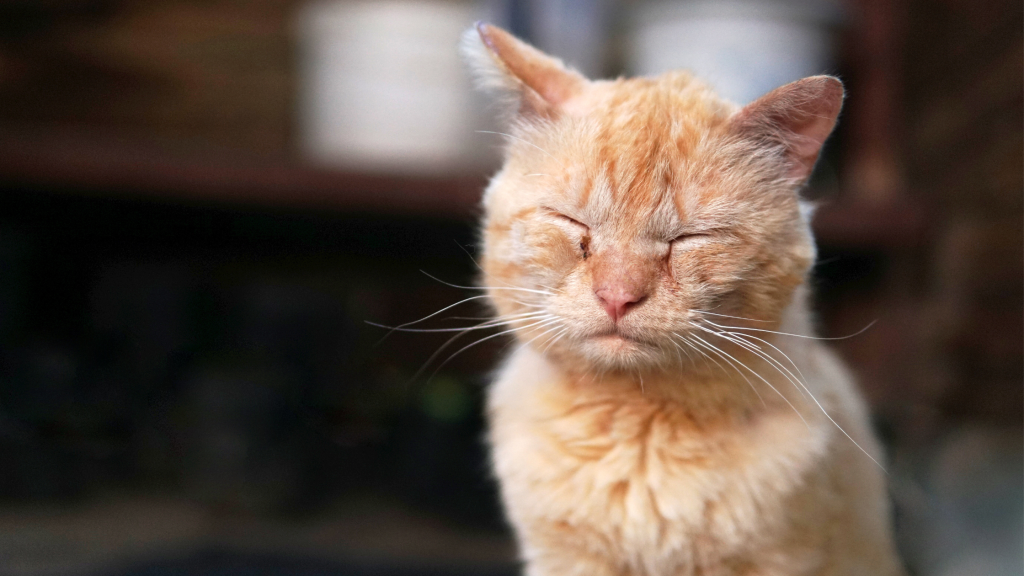
Inflammation of the eyes in cats
Inflammation of the eyes in cats can occur for various reasons, including bacterial, viral, or fungal infections, allergic reactions, eye injuries, and autoimmune diseases.
The most common form of inflammation is conjunctivitis, but other types of eye inflammation in cats are also frequently diagnosed by veterinarians, such as keratitis, uveitis (inflammation of the inner part of the eye), and inflammation of the eyelids (blepharitis).
Symptoms to watch out for
- Increased tear production or pus formation
- Swelling or redness of the eyelids, squinting
- The cat’s eyes become sensitive to light
- Increased rubbing of the eyes with paws
- Cloudiness or unusual color of the eyes
- Behavioral changes – the cat may become lethargic or aggressive due to pain
If you notice these symptoms, it is essential to consult a veterinarian. The earlier eye diseases in cats are detected, the greater the chance of successfully treating the inflammation and avoiding complications.
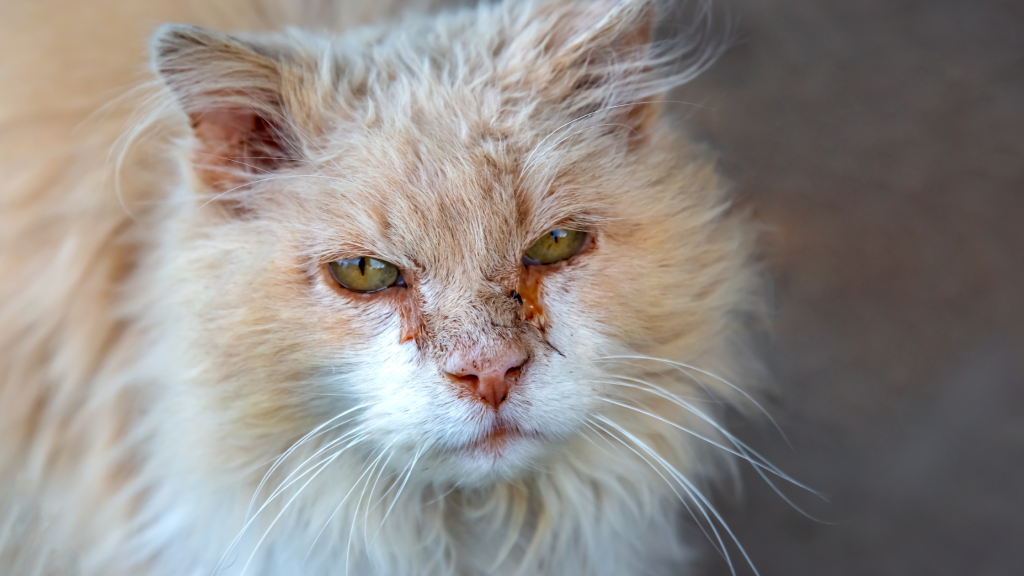
Eye drops for cats for inflammation and their use
Eye drops are one of the most common and effective ways to treat eye diseases in cats, especially infections or inflammation. Eye drops can have antibacterial, antiviral, or antifungal effects, and can also be used to reduce pain or moisturize the eyes.
Although eye drops are an effective treatment, they should be used with caution and only on the recommendation of a veterinarian.
Main types of eye drops for cats
- Antibacterial eye drops for cats. Used to treat bacterial infections such as conjunctivitis. These drops inhibit bacterial growth and help reduce inflammation.
- Antiviral eye drops for cats. Viral infections such as feline herpesvirus (FHV-1) can cause eye diseases. Antiviral eye drops help inhibit the action of the virus and reduce the symptoms of the disease.
- Anti-inflammatory eye drops for cats. Designed to reduce inflammation and pain in the eye tissues. Often used after eye injuries or surgery.
- Moisturizing eye drops for cats. If your cat suffers from dry eyes, moisturizing drops can be used to help keep the eye mucosa moist and reduce irritation.
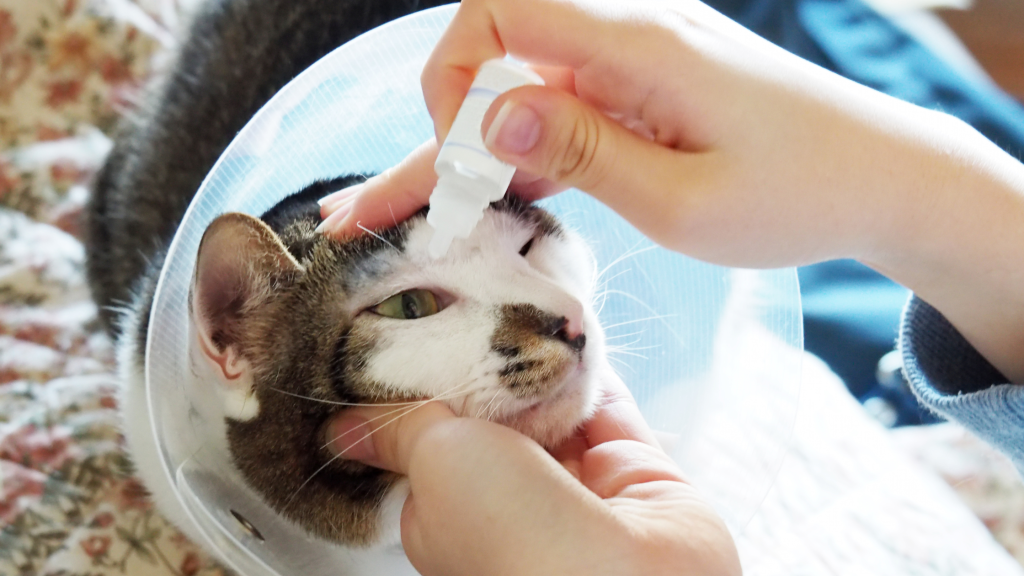
Why should you visit a veterinary clinic for cat eye problems?
Cat eye diseases require special attention and professional care, so only a veterinarian can prescribe medication. Improperly selected medications or eye drops may not only be ineffective, but may also worsen the situation.
For example, improper use of antibiotics can lead to resistance, and incorrectly used anti-inflammatory drugs can suppress symptoms but not cure the underlying cause of the disease.
- After assessing the cat’s condition, the veterinarian will make an accurate diagnosis.
- They will select the most appropriate treatment, which may include both medication and specific care.
- This prevents serious complications such as loss of vision or chronic inflammation.
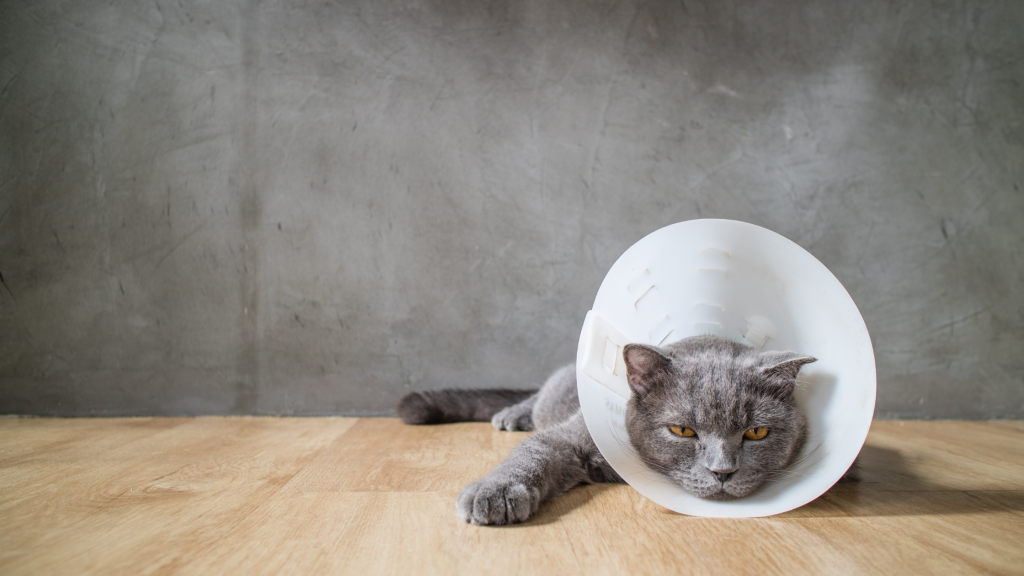
Where to seek help for cat eye diseases?
The Begemotas Veterinary Clinic in Vilnius is a modern clinic offering a wide range of services, including specialized eye disease treatment services. The clinic’s veterinarians have experience in diagnosing and treating various eye diseases, so pet owners can rest assured that their pet’s eye health is in good hands.
Eye diseases in cats can cause a lot of discomfort and even serious health problems, but proper and timely treatment can help prevent complications. If you notice symptoms of eye disease, it is important to see a veterinarian immediately, and eye drops are often the main method of treatment.
- The diagnostics provided at the Begemotas veterinary clinic include eye condition assessment, special examinations, and, if necessary, treatment of cats’ eyes.
- Modern diagnostic methods and high-quality medications, including various types of eye drops, are used.
- In addition, veterinarians provide detailed consultations on the proper prevention and treatment of eye diseases.
A visit to the vet is an essential step in ensuring the health of your pet cat’s eyes. If you suspect that your cat is unwell, contact us today.


